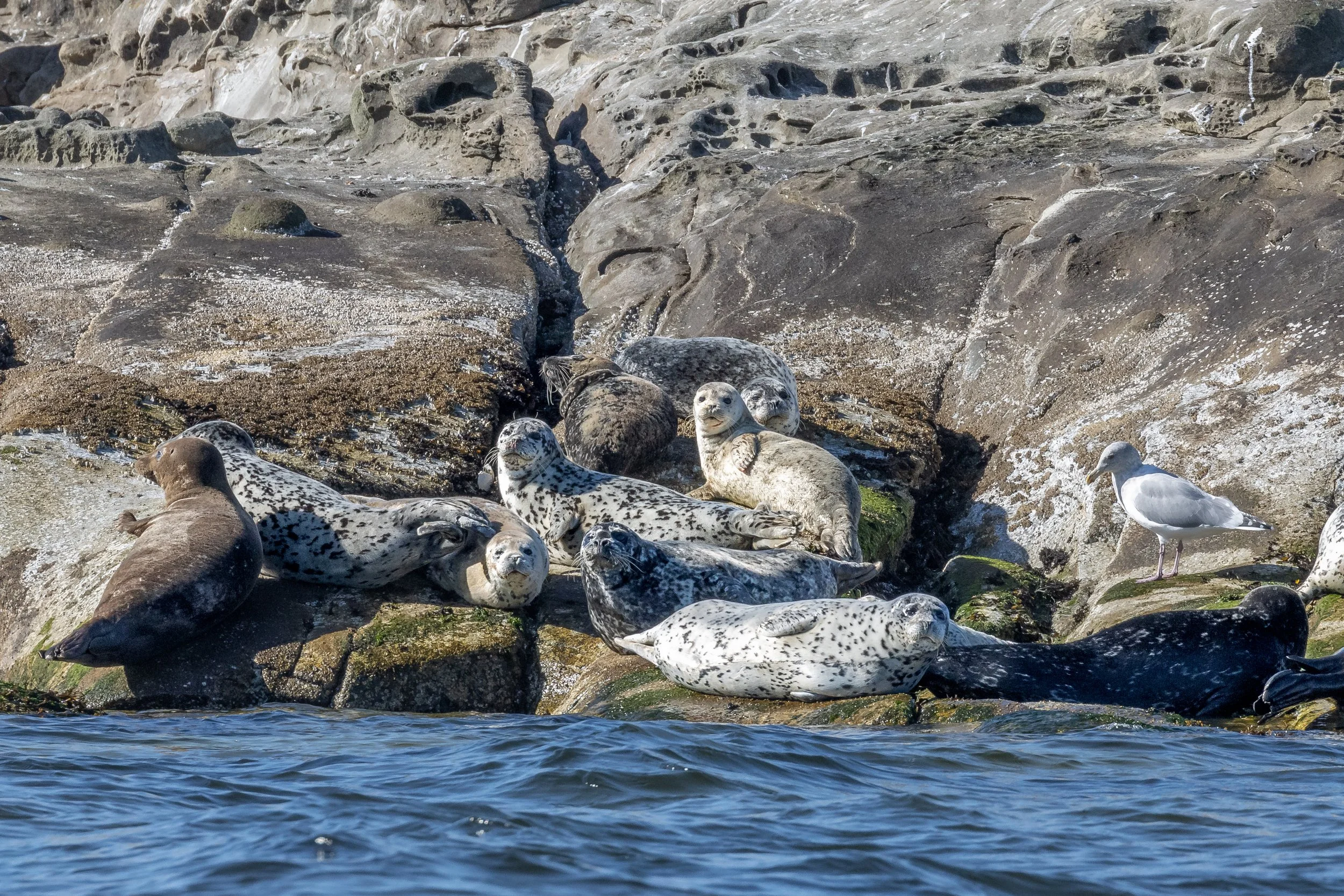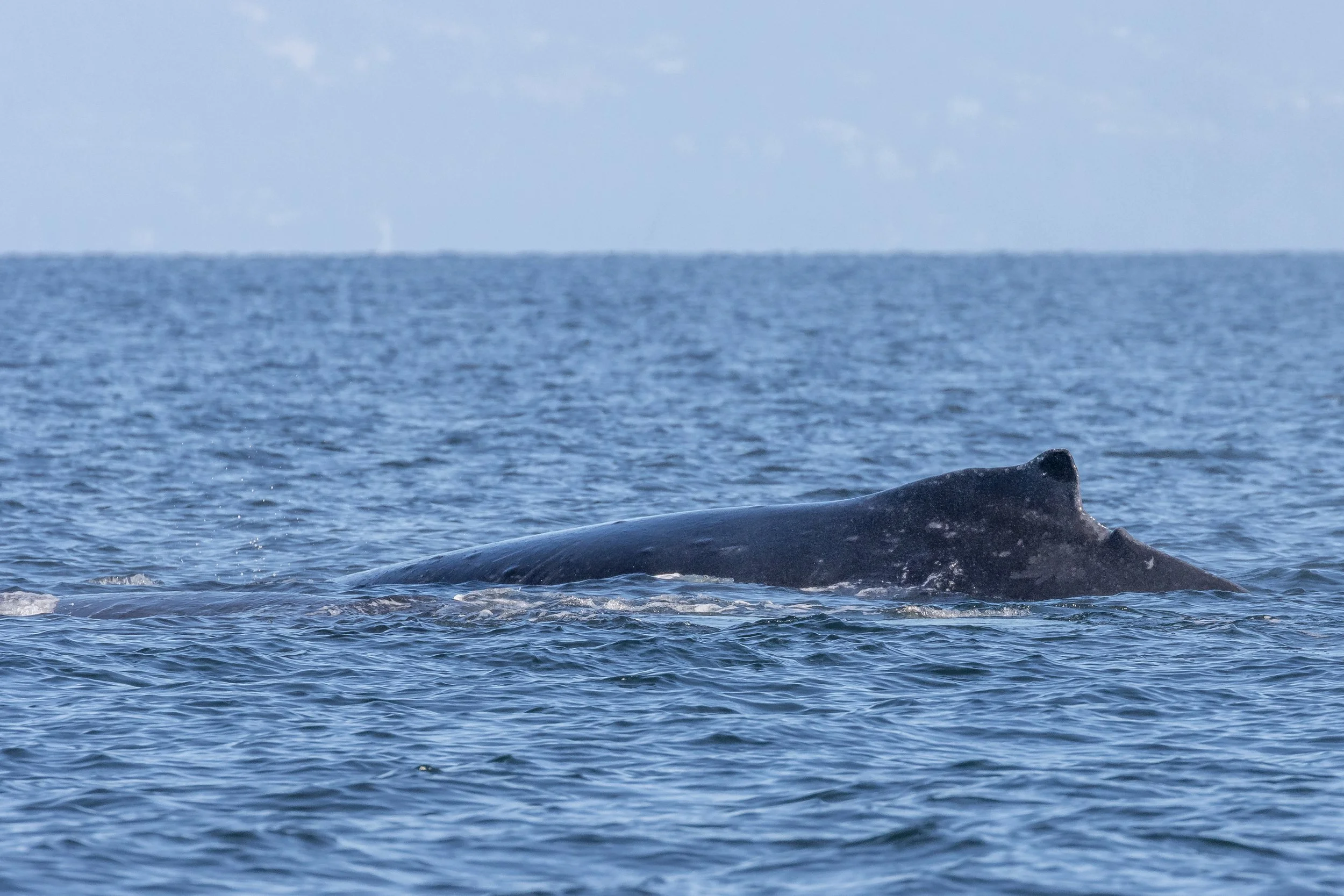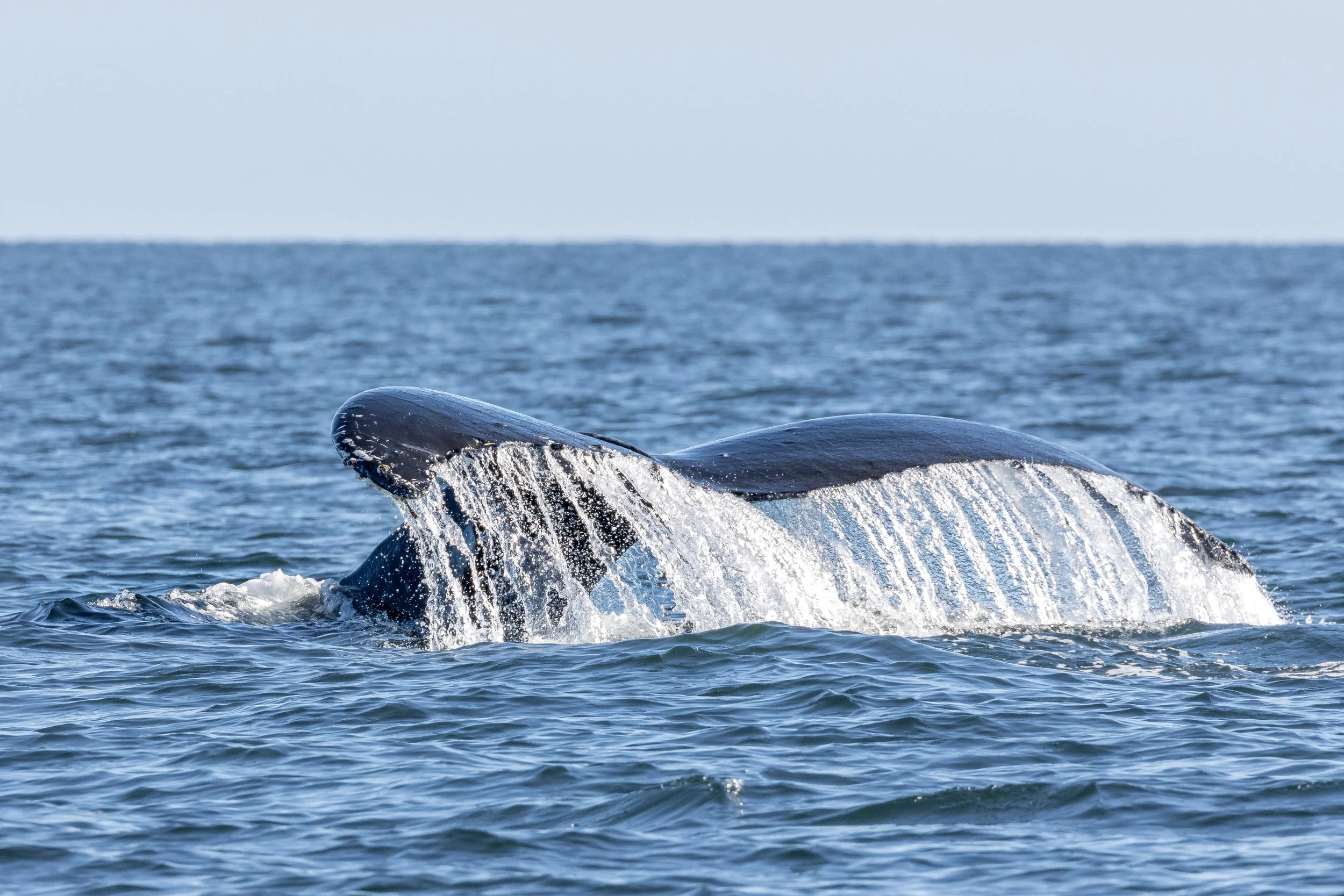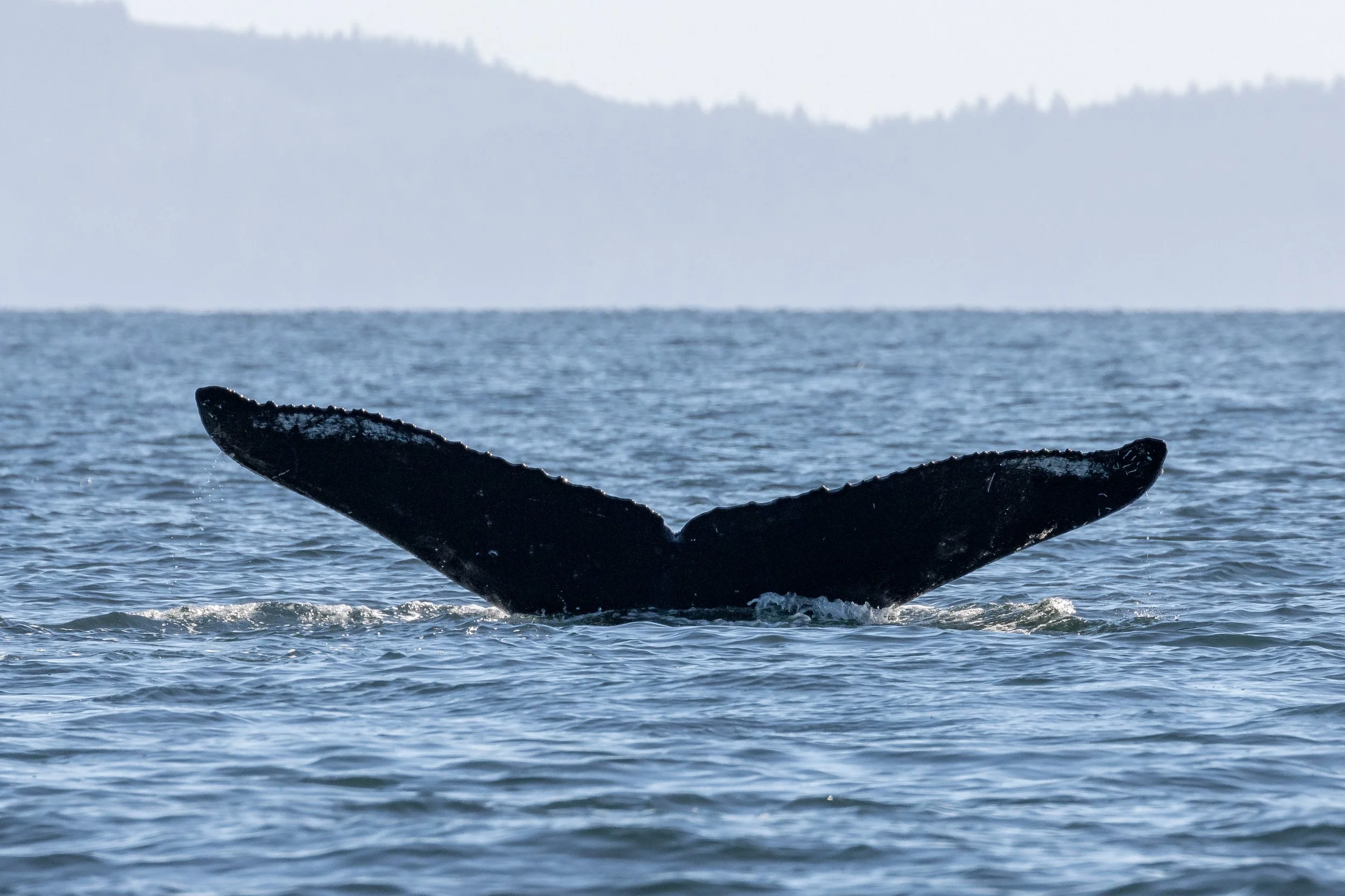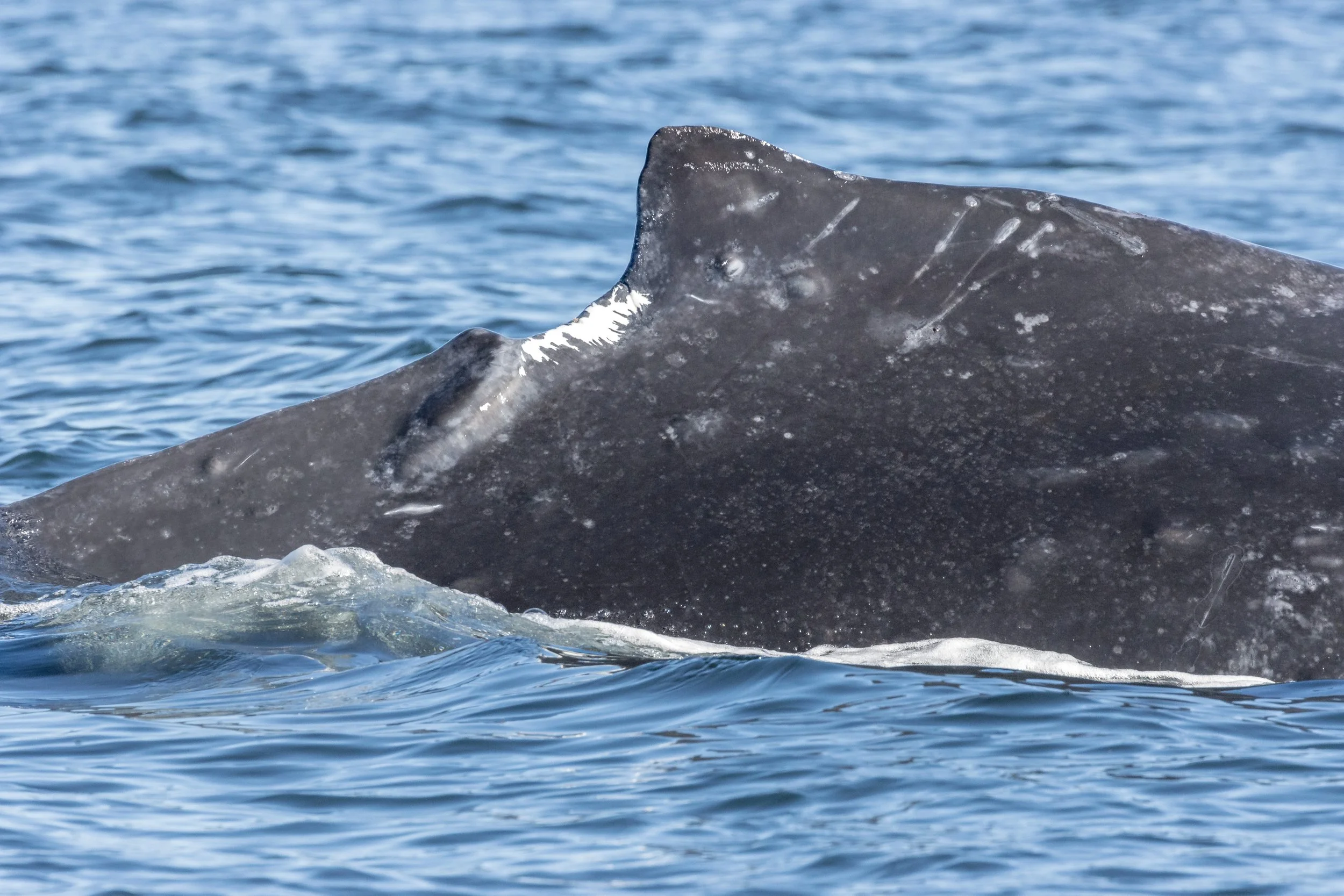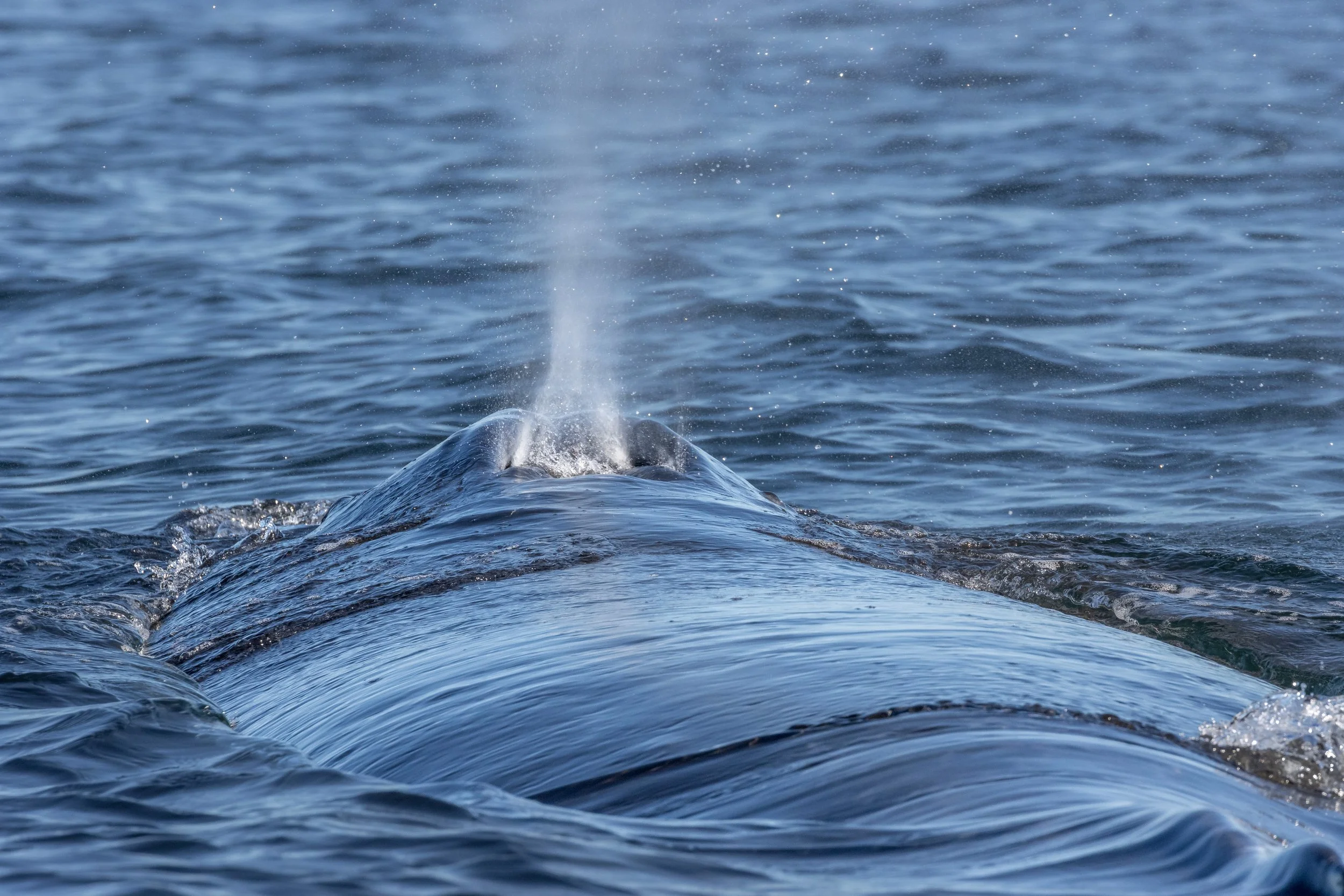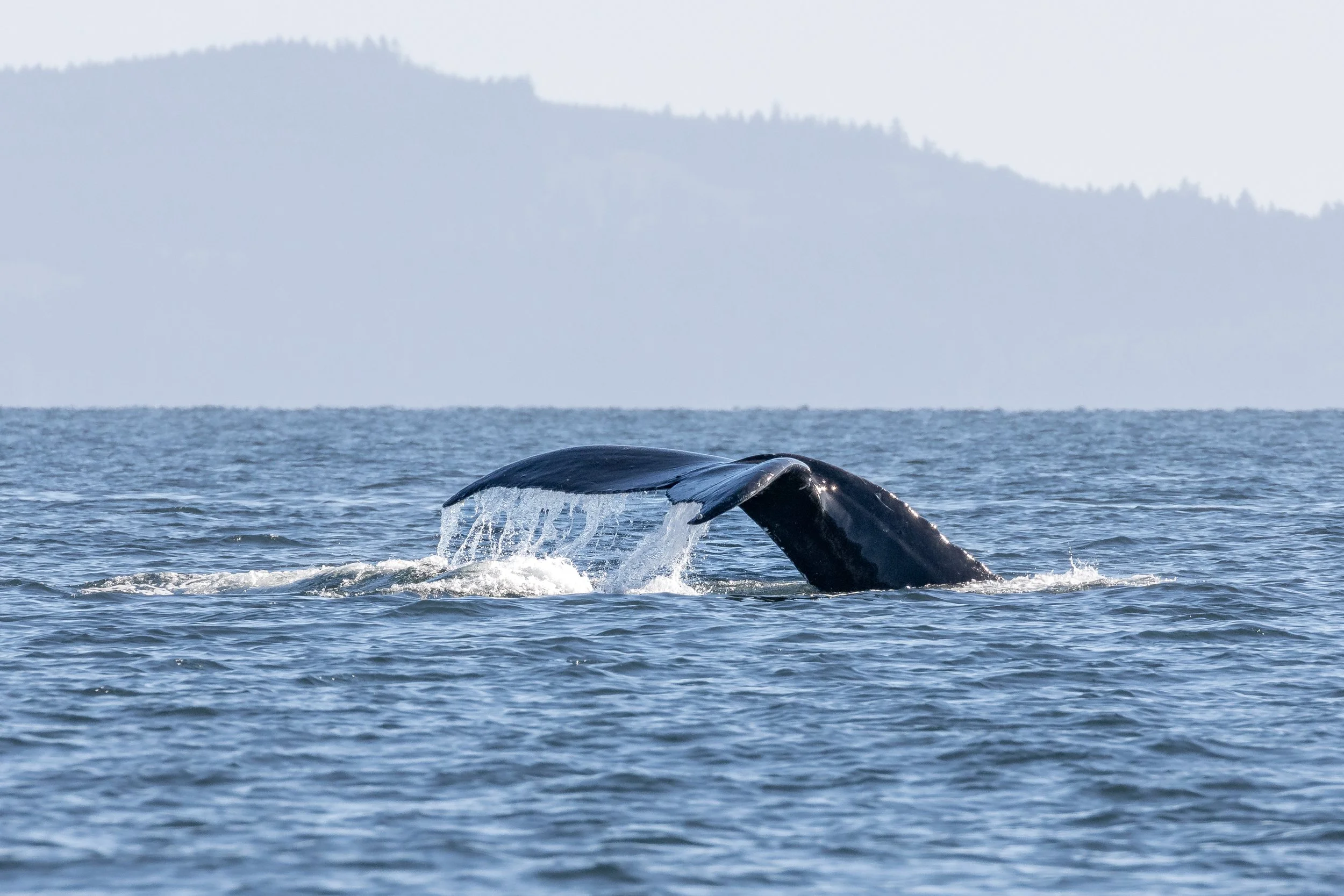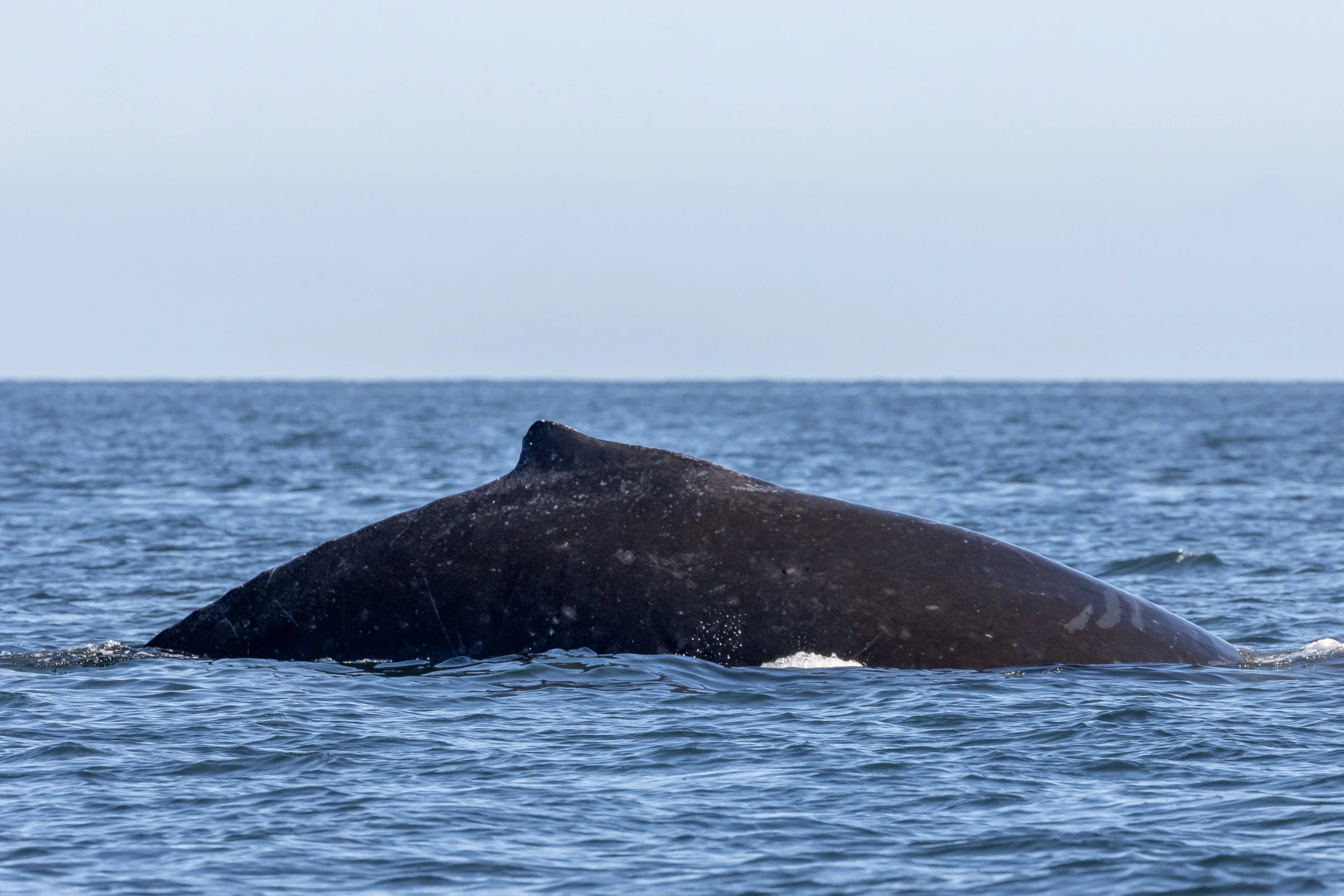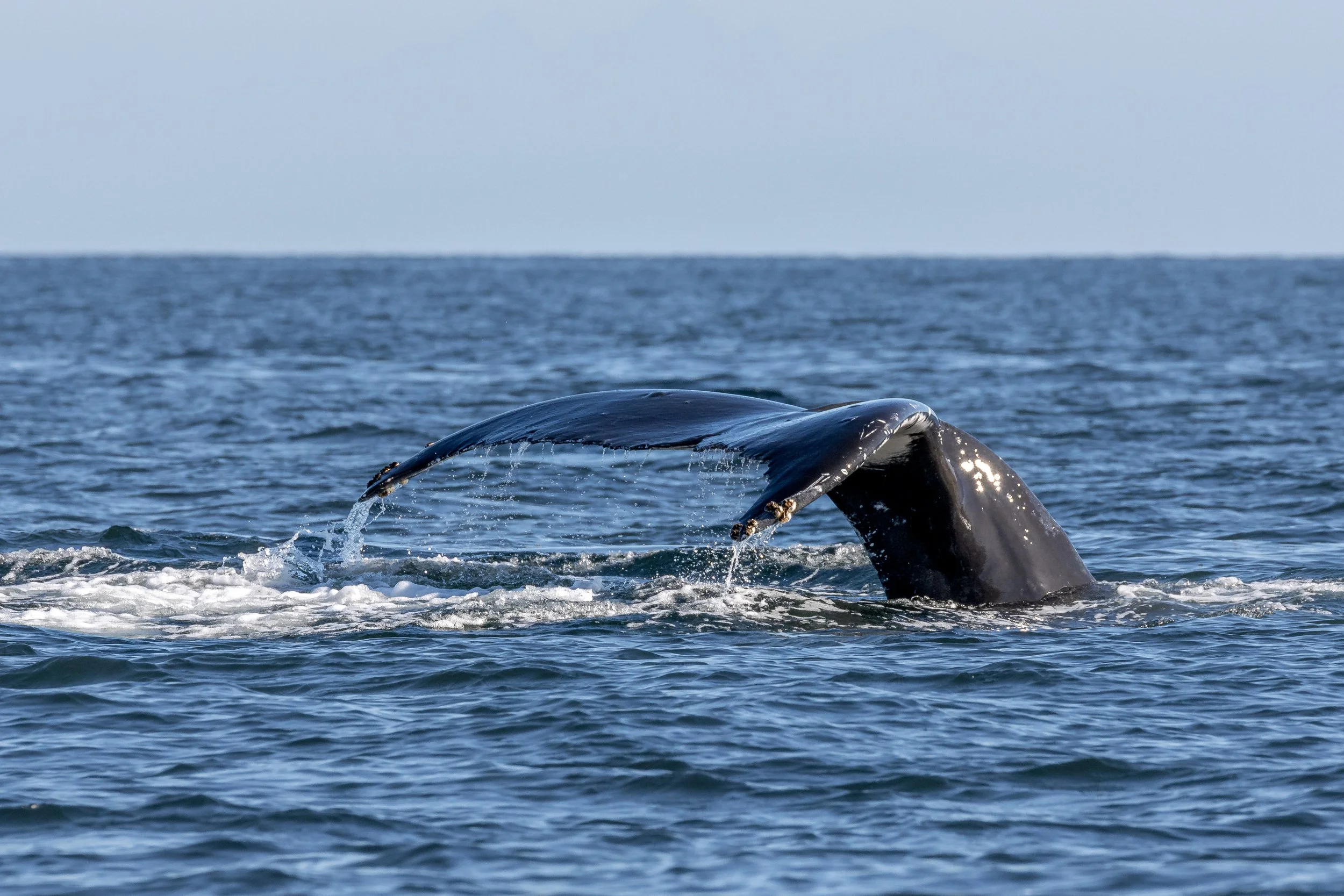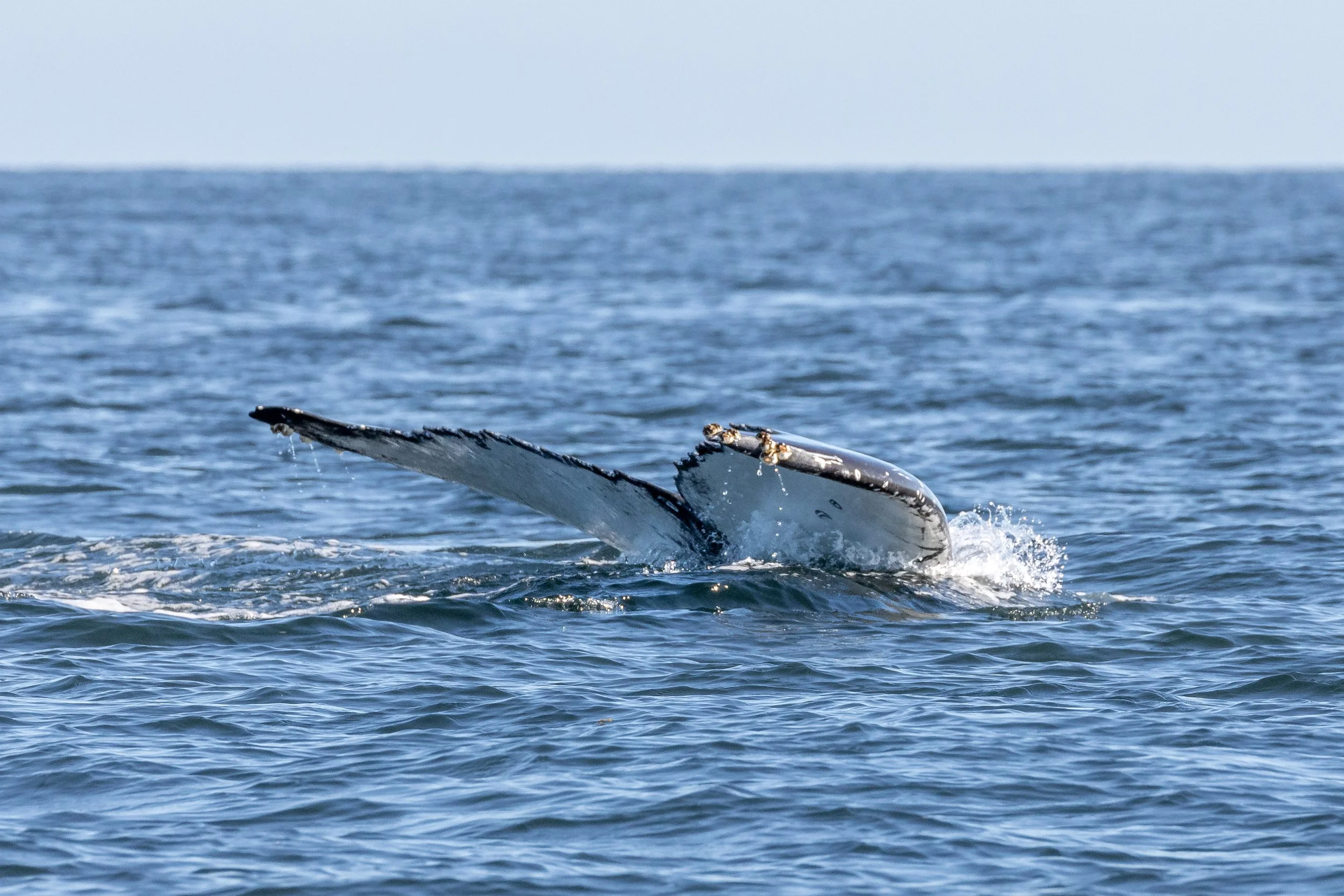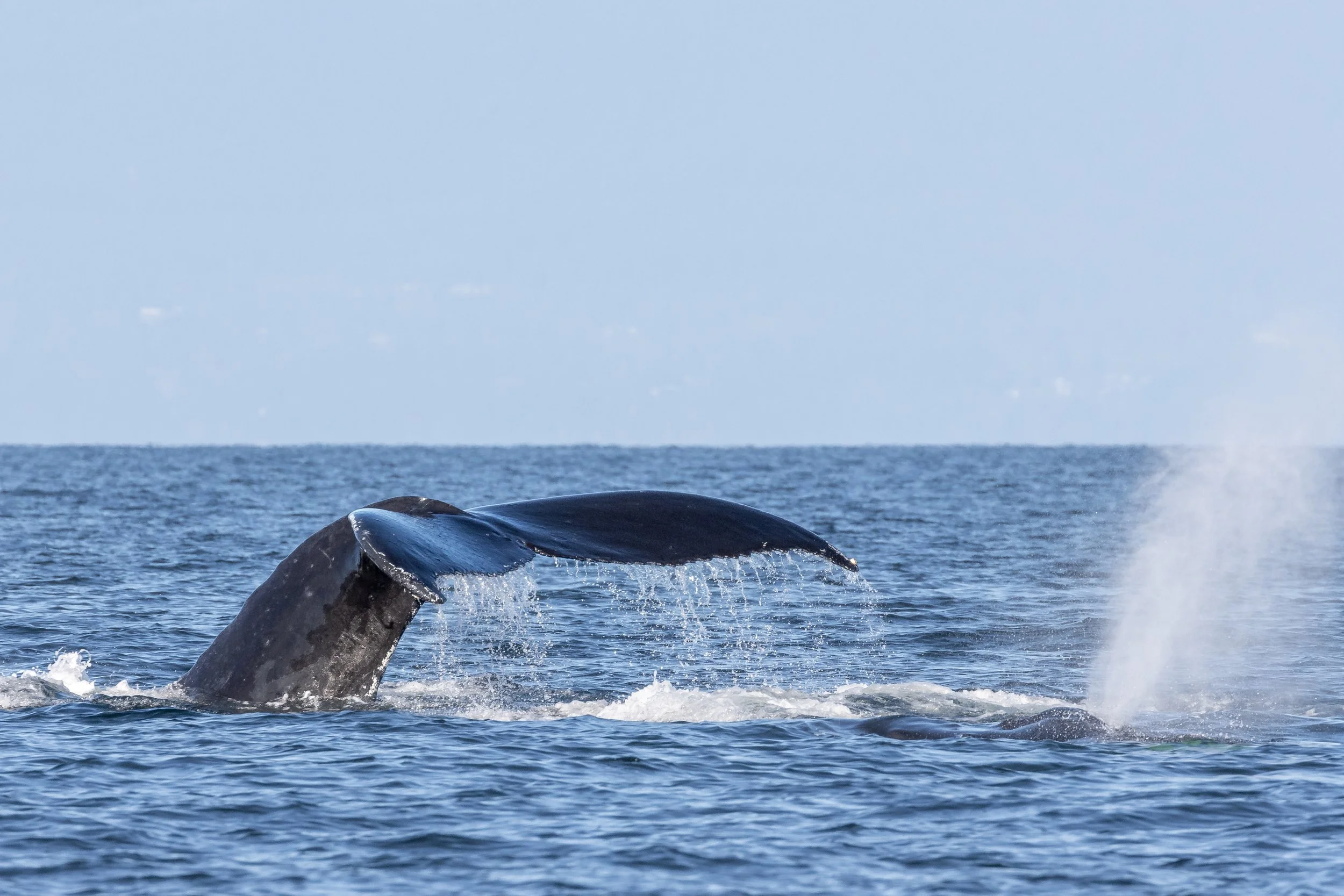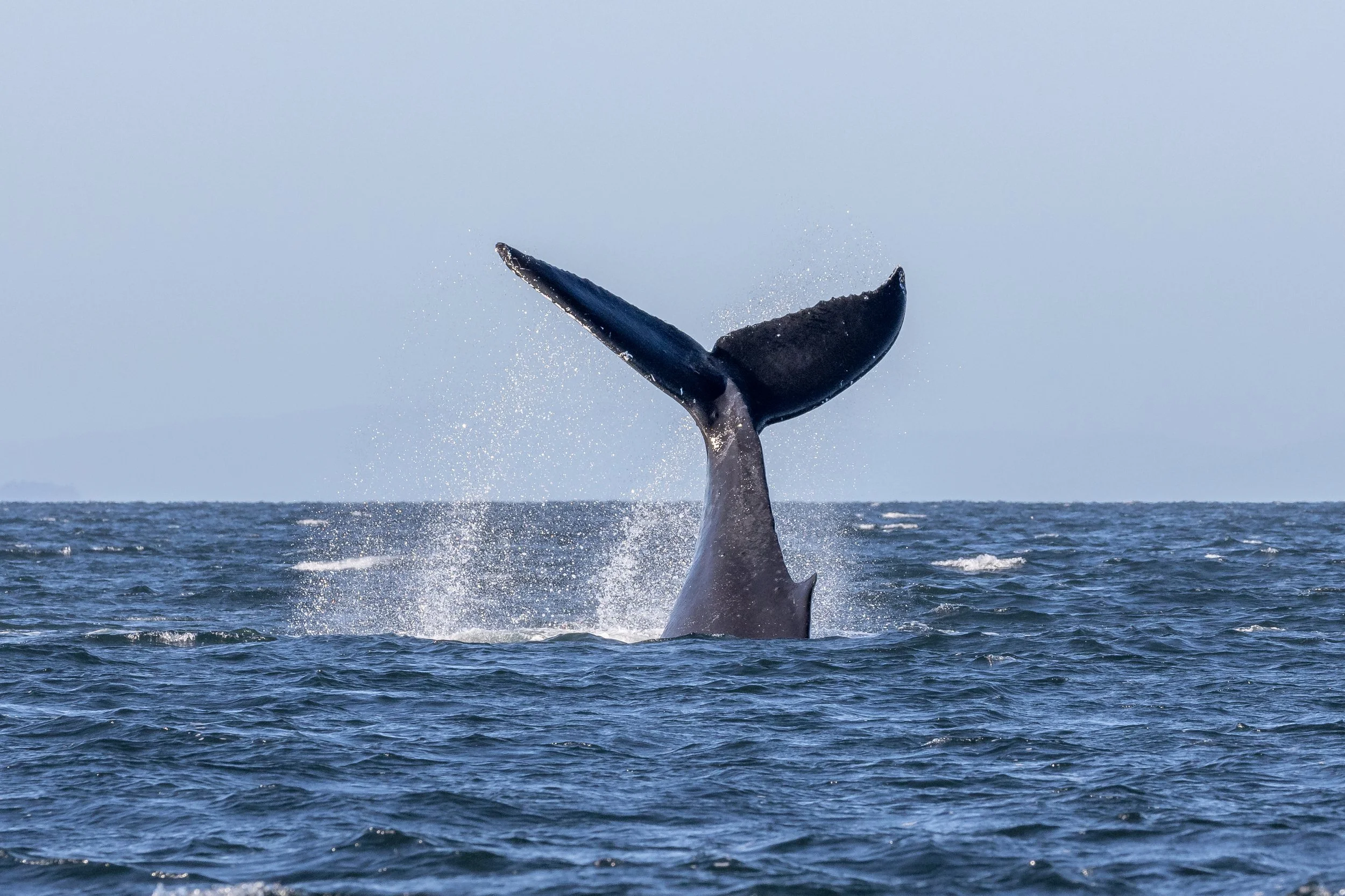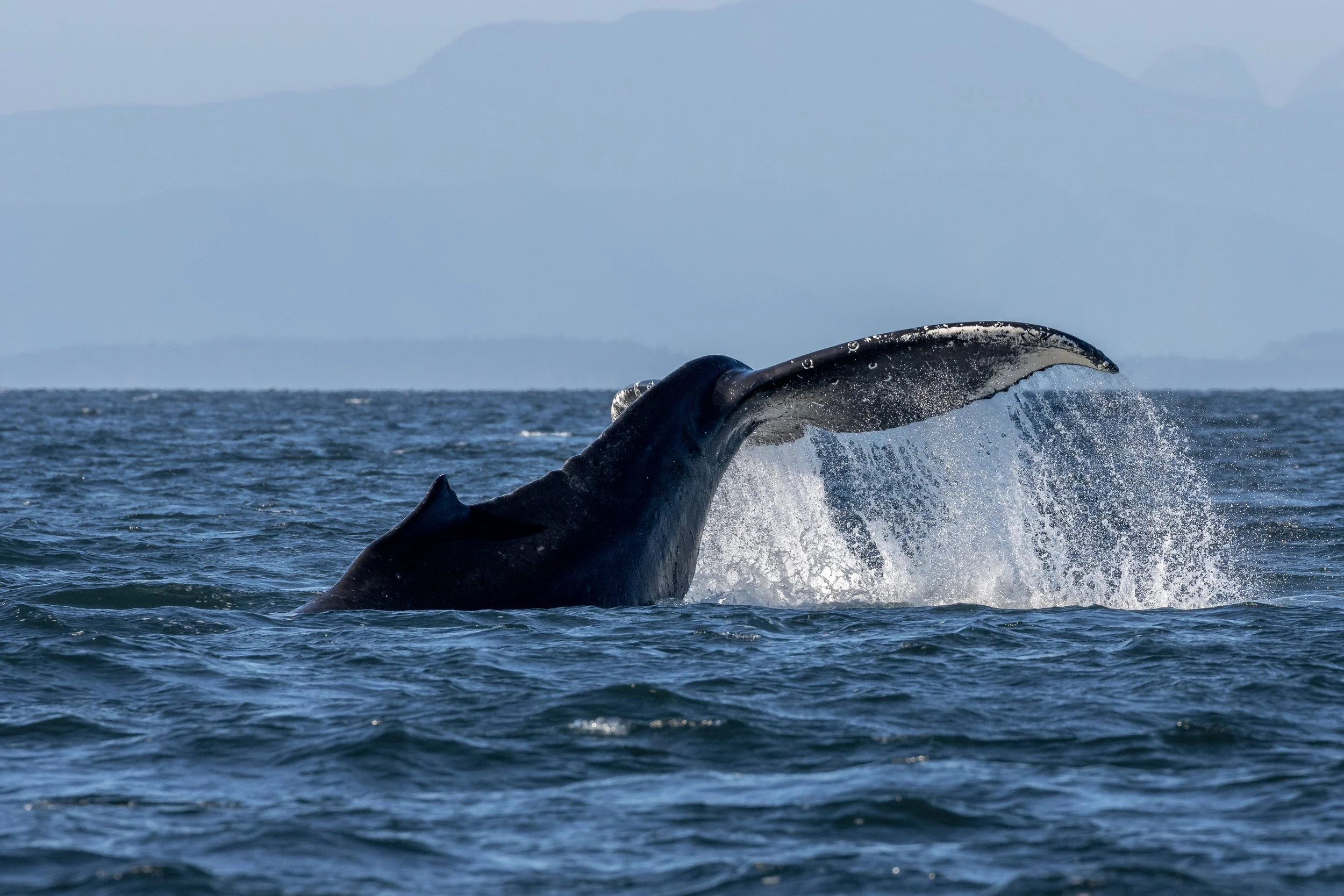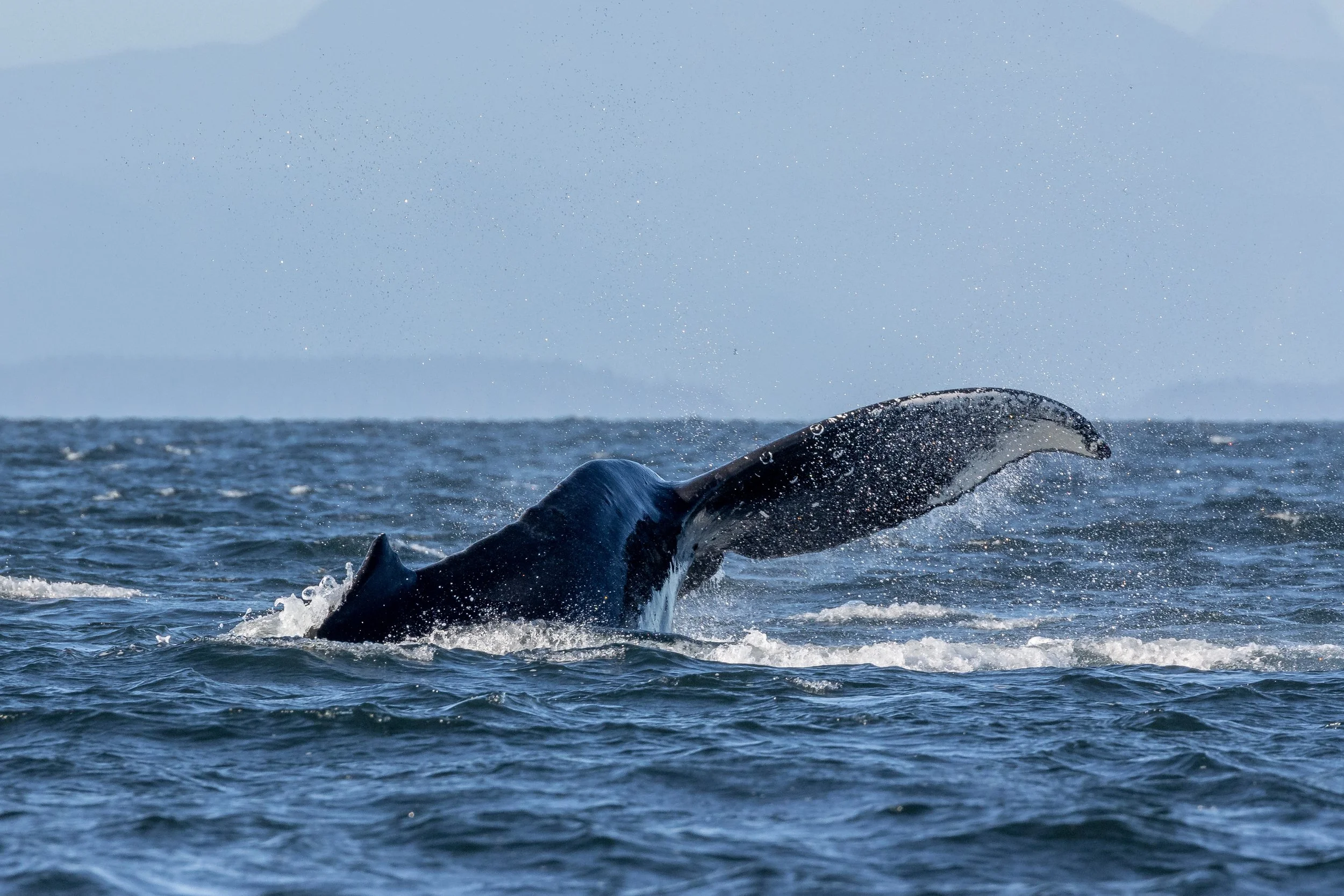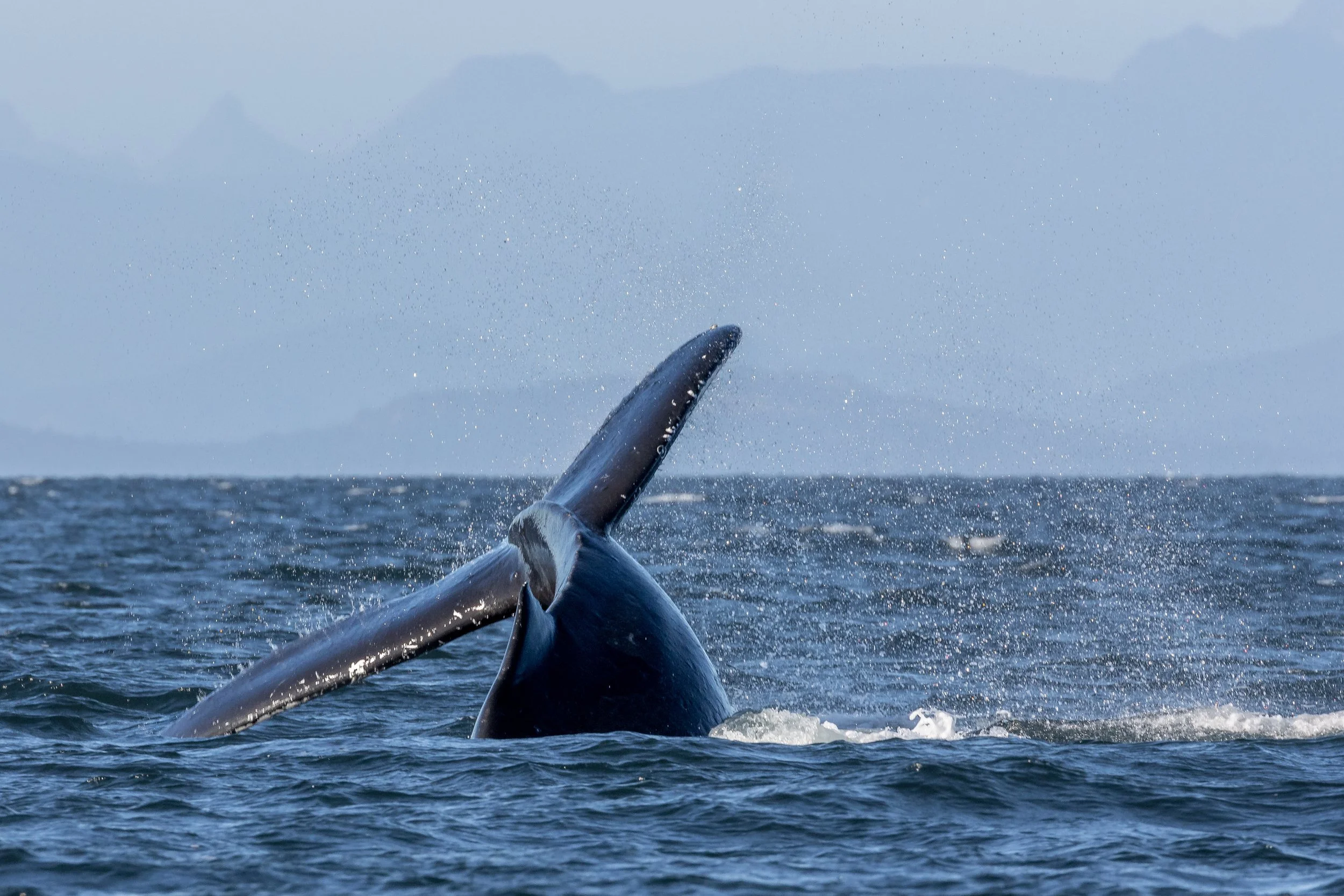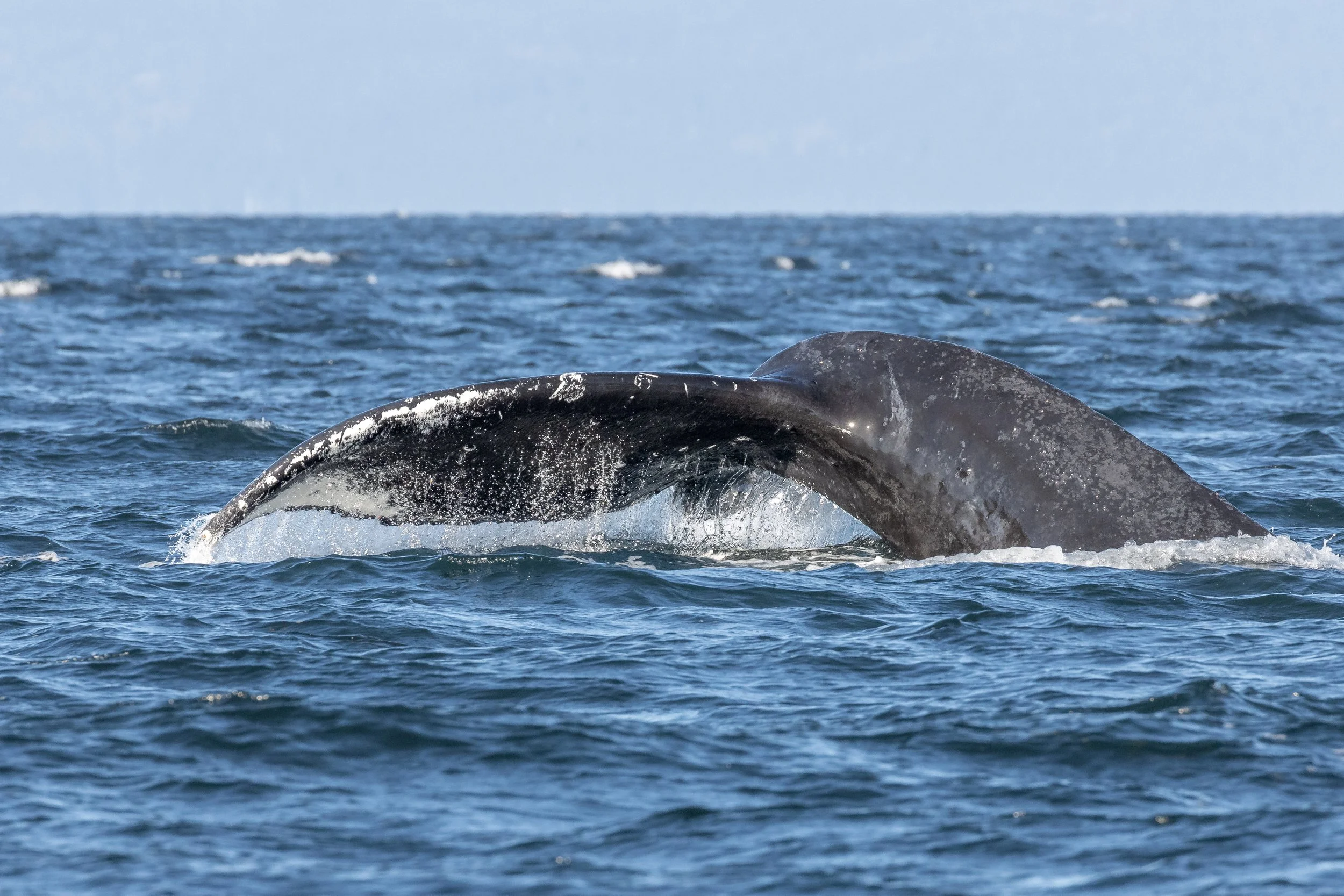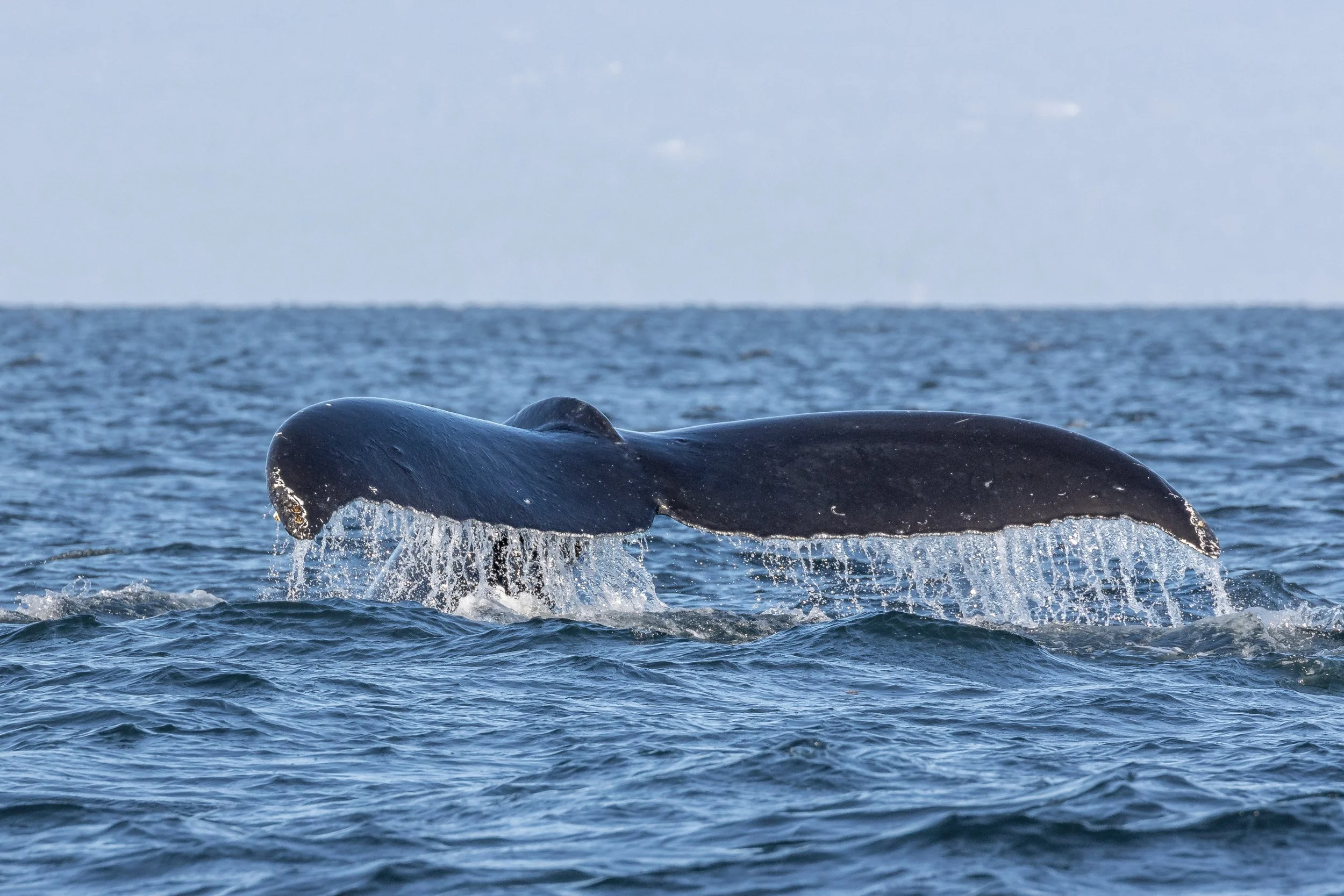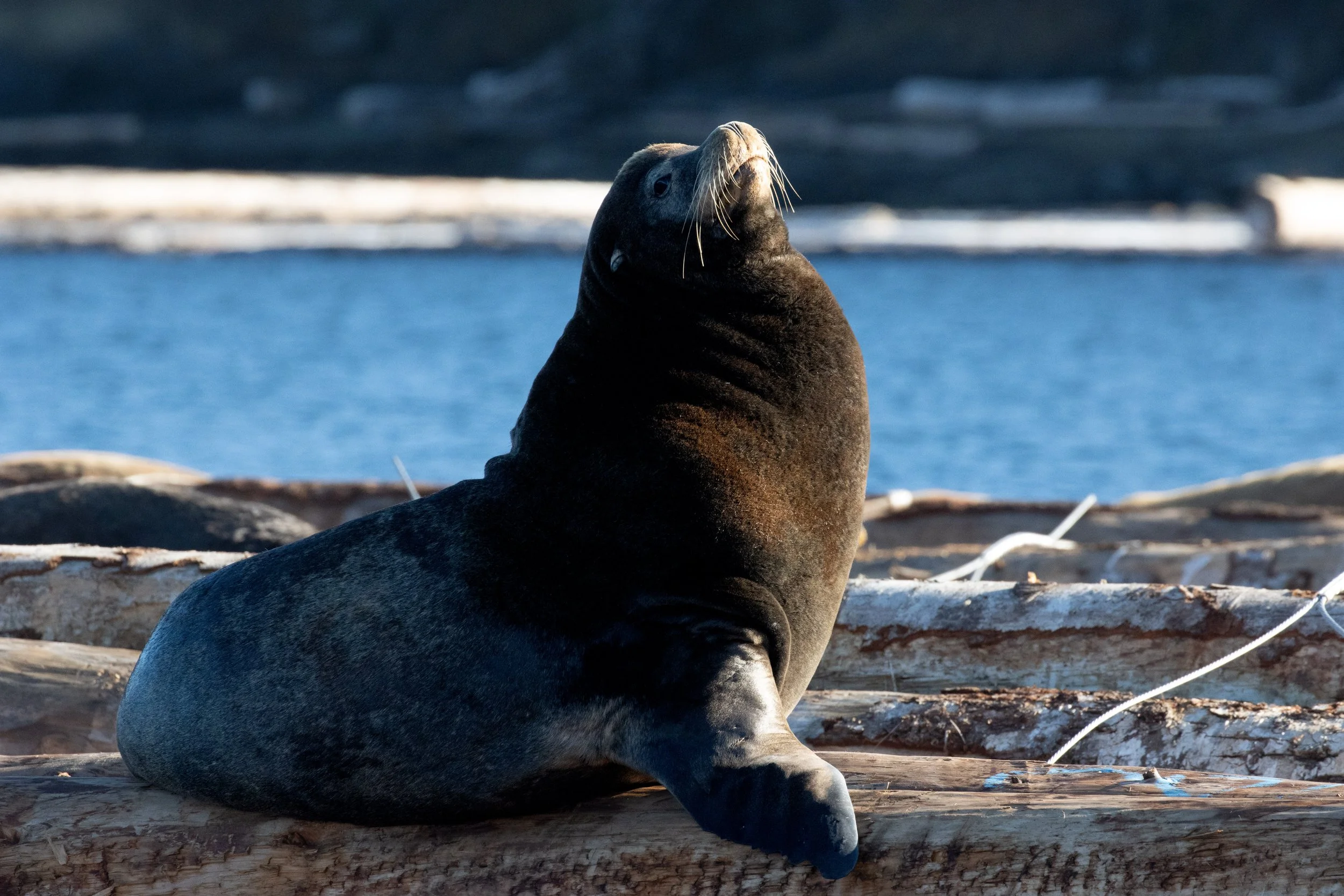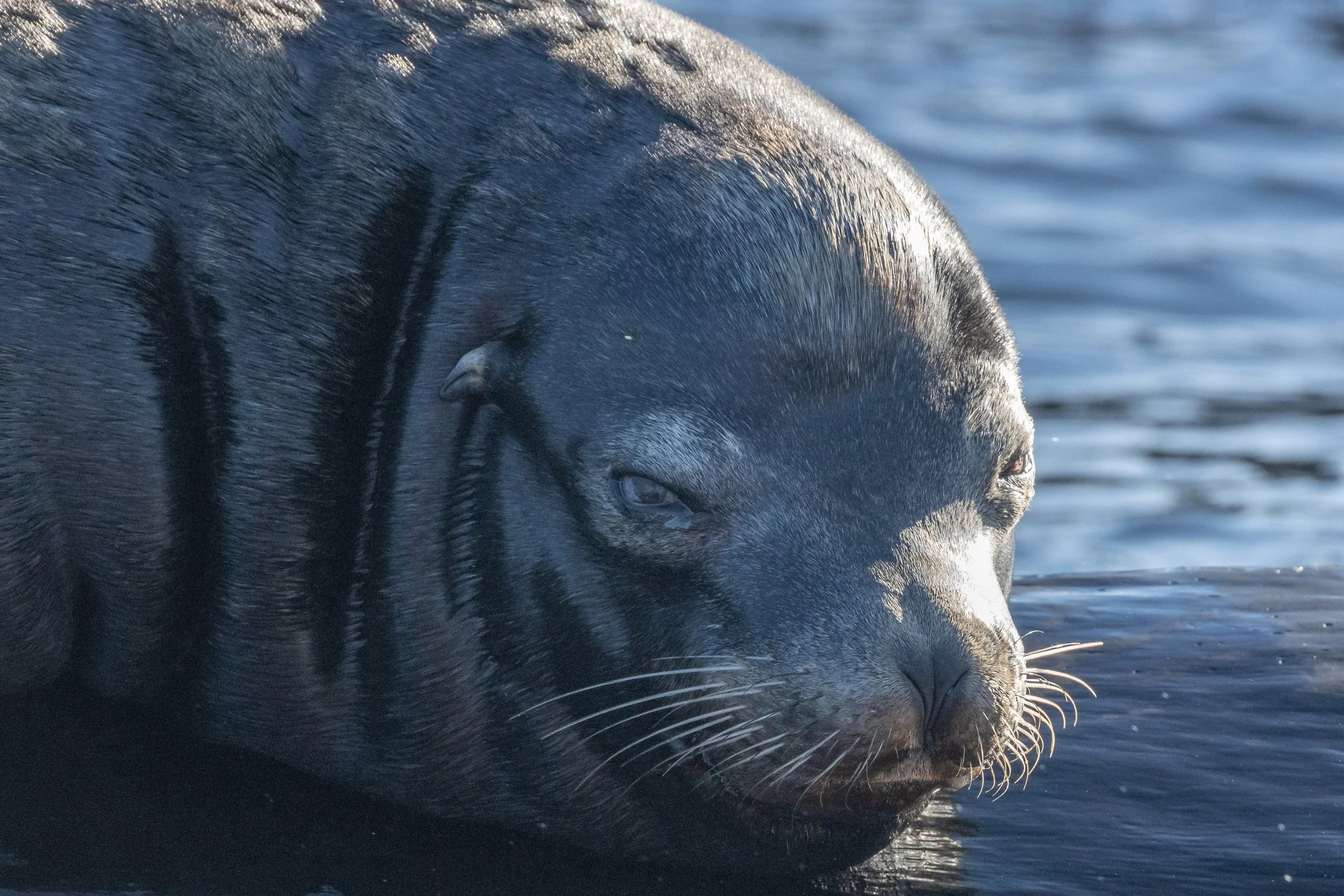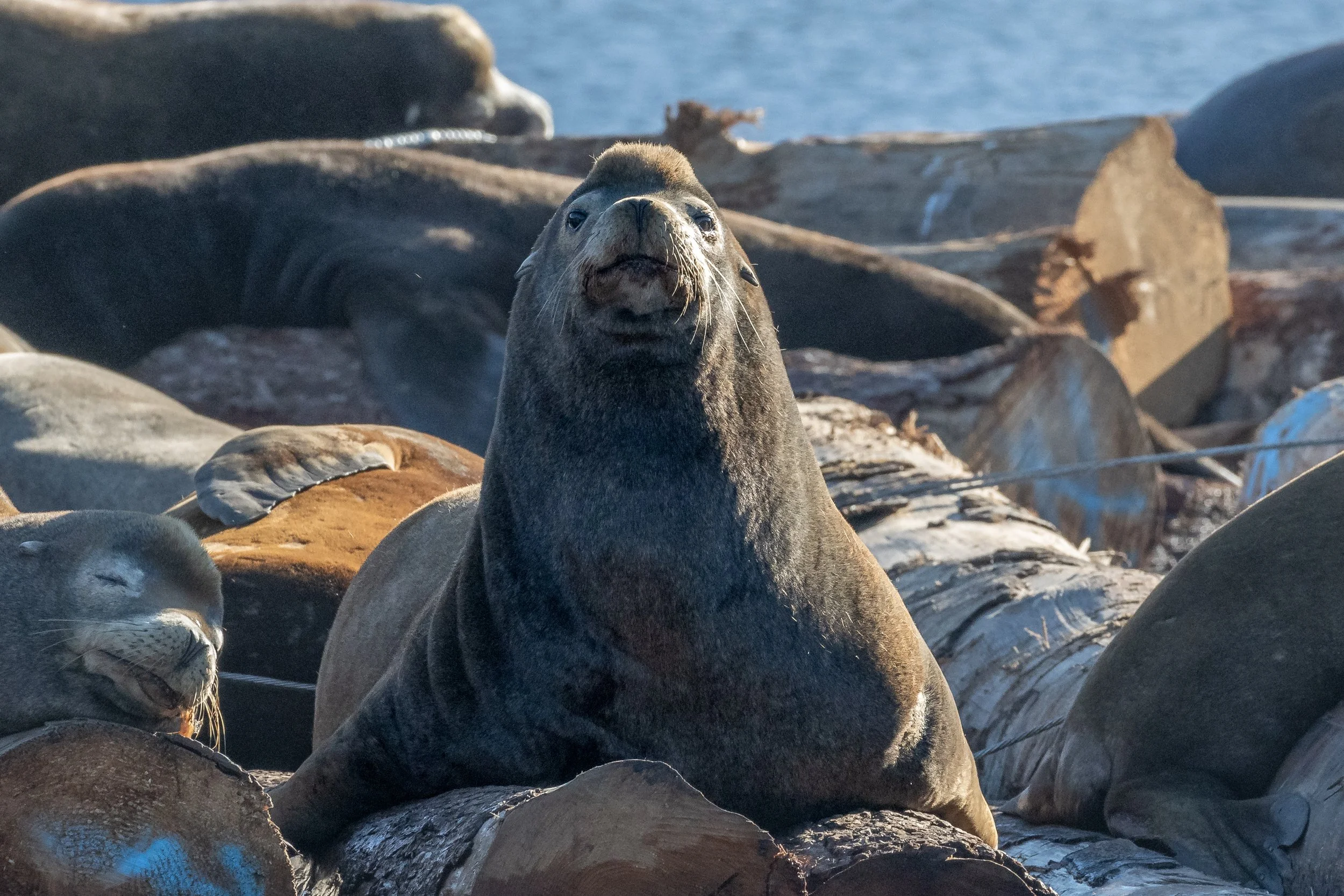October 11th - Humpback Soup!
It was a beautiful, sunny day as our open boat tour left the harbour in search of whales. We started the search by heading south from Nanaimo, through Dodd Narrows, and into Stuart Channel. We stopped to watch some Harbour Seals hauled out at Miami Island and then heard that there were some humpback whales near Thrasher Rock, East of Gabriola Passage! We headed that way and soon saw blows in the distance! It was Orion (BCX1251) and Trooper (KEX0026) travelling together! Orion was giving us his normal high flukes which make him very easy to ID. Although it stays interesting since he looks like he should be a y classification of humpback but is actually an x. Trooper was being a little playful giving us some sideways swimming and also high flukes, which he doesn’t usually do.
Not too far from these two was another humpback pair: Nuage (KEX0009) and Harpy (BCY0458 calf 2020). These two were just doing feeding dives while we watched them.
We started to head north, back towards Nanaimo after leaving this pair behind, when we saw another set of humpback blows in the distance! One of these two whales was Sherwina (KEY0034) who was having a bit of fun with tail slaps and cartwheels while we watched her. The other two we didn’t manage to get any good photos of so we aren’t sure who it was at this time.
It’s interesting that we’ve been seeing so many instances of humpback whales travelling together in the area, as they were thought to be solitary animals. There are a few theories as to why this might be changing, the top one is that we are just seeing them return to natural behaviours since their numbers have been increasing in our waters ever since whaling was banned. This explains why we might see them together more, but doesn’t really explain why. Some ideas are that they could be increasing their efficiency in feeding by doing it in pairs since when they lunge through their food there is likely to be overflow which the second humpback could more efficiently scoop up than having to find their own food source. Cooperative feeding has been recorded in humpbacks before, with the most impressive example of it being cooperative bubble netting which happens in northern BC and Alaska. This can have up to 30 humpback whales being coordinated by one leader, laying down circles of bubbles in a constricting net until they lunge up through the bubbles and eat all the fish that are stuck inside. We don’t see this level of cooperation here yet, but the bubble netting behaviour has been recorded spreading south, with us getting to see a Humpback whale Prowler lay a circle of bubbles near Gabriola Island last week! Let’s hope someday we will be able to see more feeding like this here!
Even when they aren’t doing that type of feeding out humpbacks are still amazing to watch, as these gentle giants spend their summer here in BC.
Please enjoy the photos from the tour taken by Naturalist Janine Van Der Linden!
Harbour seals on Miami Island.
Great blue heron on Miami Island.
Trooper swimming sideways.
Trooper’s distinct dorsal fin.
Orion going for a dive.
Trooper going for a dive.
Trooper’s tail flukes.
The scarring on Trooper’s dorsal fin from a ship trike in Howe Sound in 2018.
Trooper breathing at the surface.
Orion letting out a breath.
Check out those tubercules!
Orion letting out a breath.
Orion’s tail flukes. Usually you would think it was a Y whale but he is classified as a X.
Trooper Diving.
Harpy (front) and Nuage (back).
Nuage preparing to dive.
Nuage going for a dive.
Harpy going for a dive.
The underside of Harpy’s tail flukes.
Nuage lifting their tail and harpy breathes beside him.
The underside of Nuage’s tail flukes.
Harpy diving.
Sherwina doing a cartwheel.
Sherwina tail slapping.
Sherwina.
Sherwina.
Sherwina going for a dive.
Sherwina lifting her tail for a dive.
The underside of Sherwina’s tail flukes.
A proud looking California Sea Lion.
California Sea Lion.

